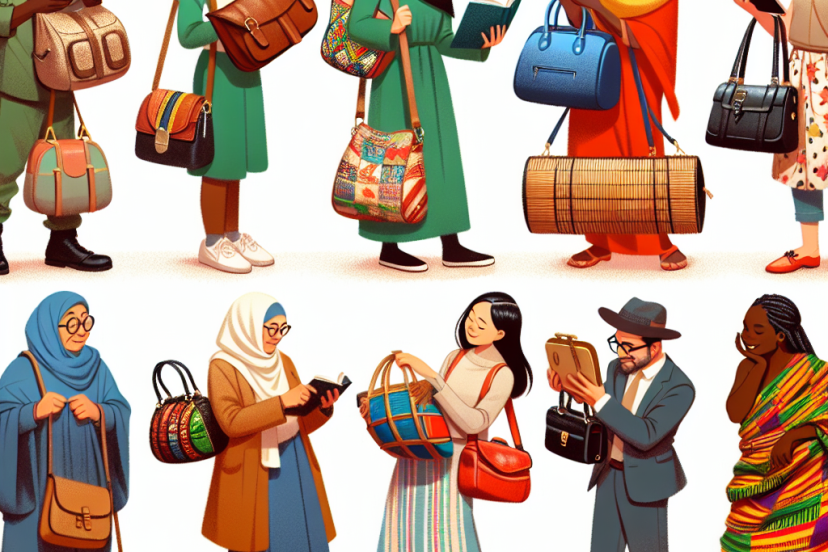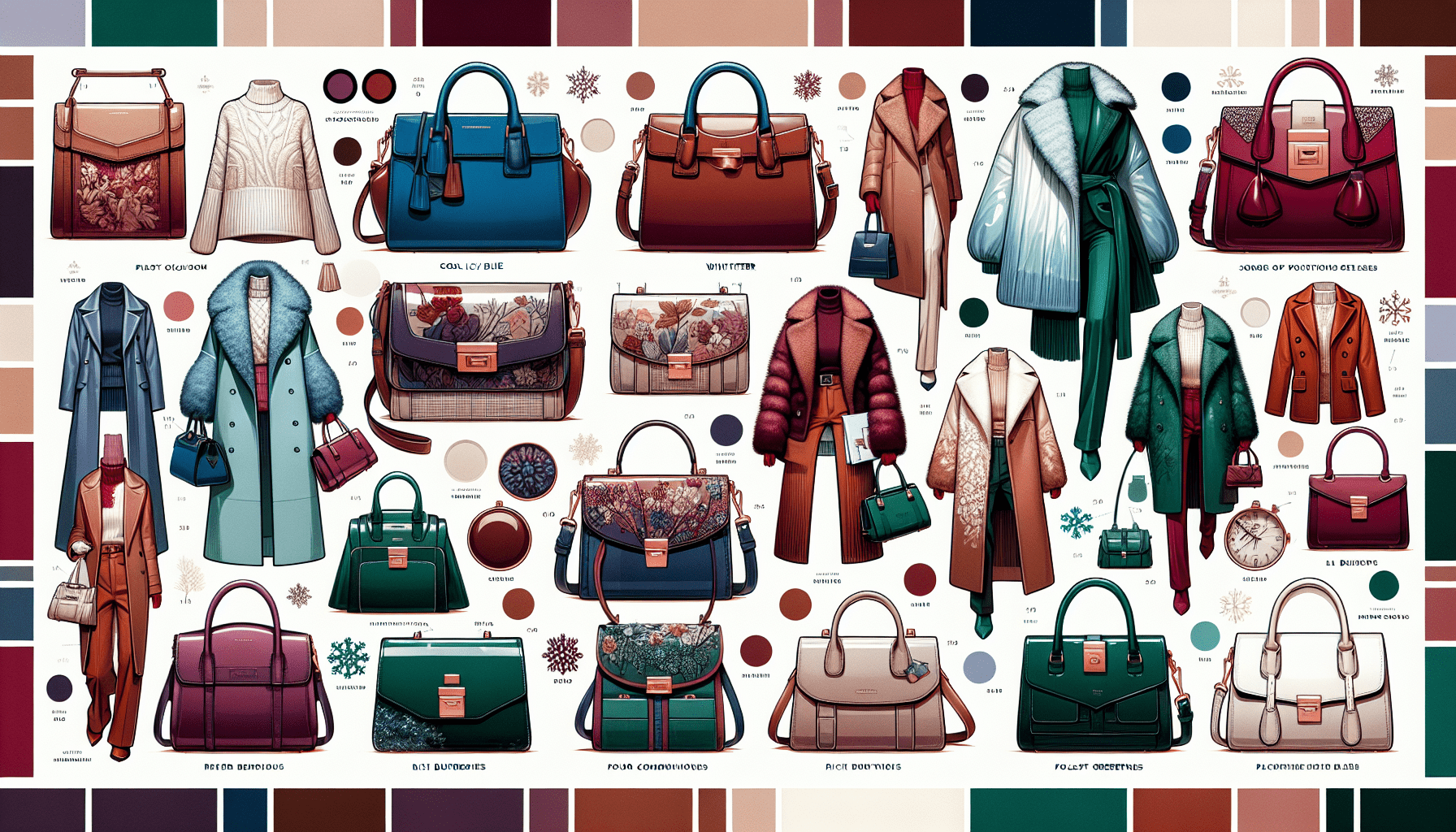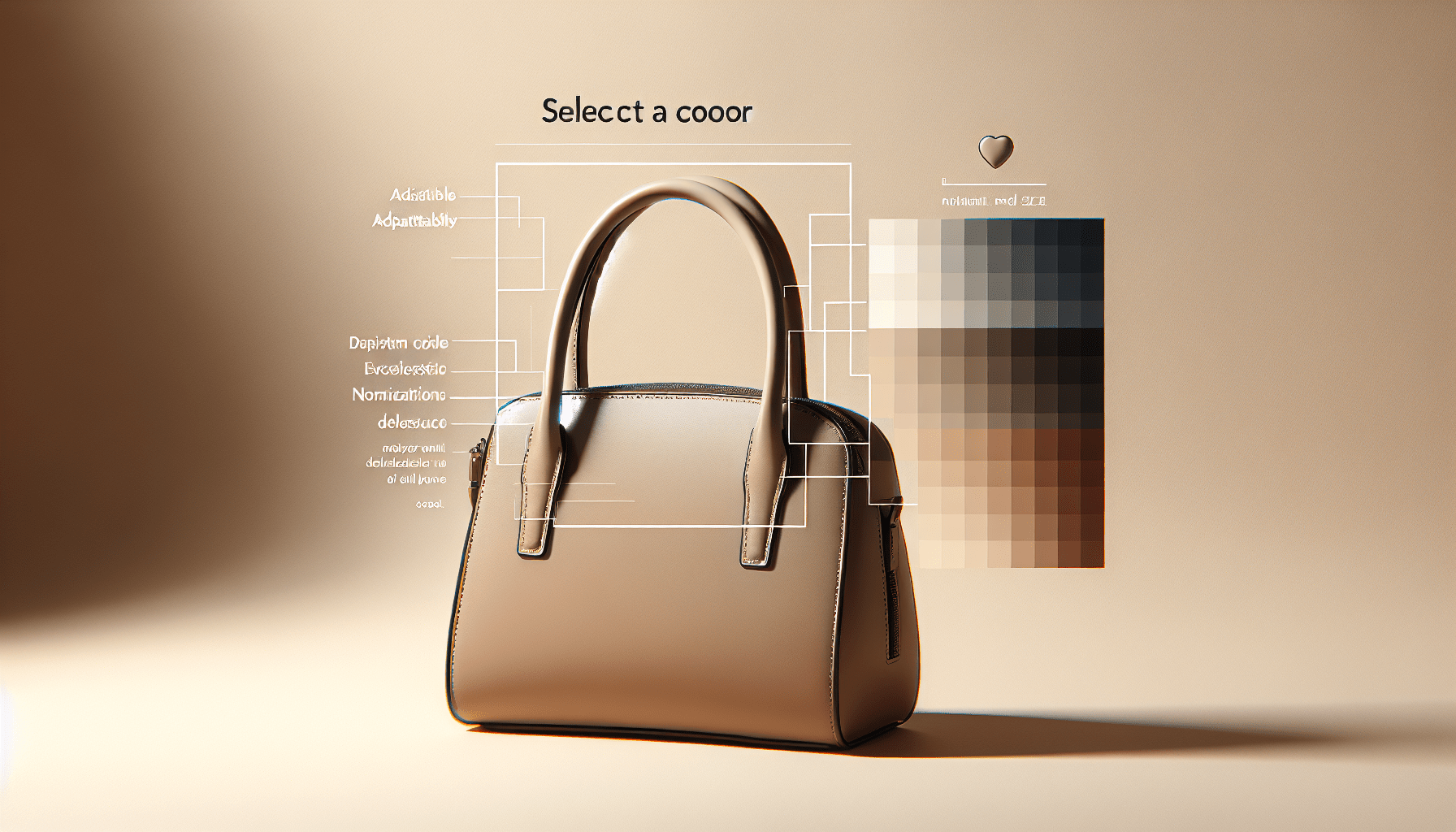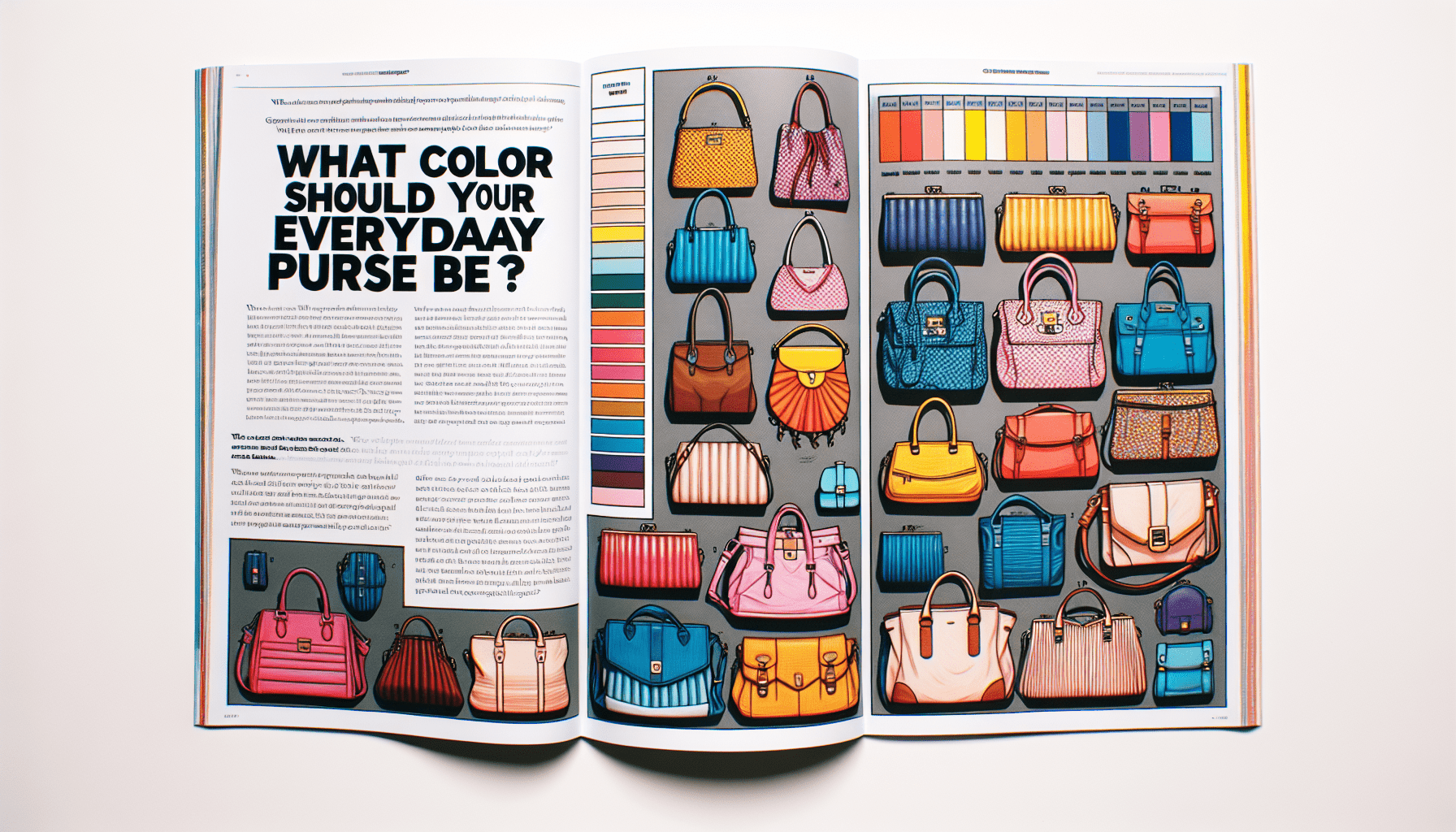Are There Any Cultural Considerations When Choosing Handbags
Have you ever wondered if there are any cultural factors to consider when selecting a handbag? It turns out that the answer is a resounding “yes!” Handbags not only serve a practical purpose but also serve as a fashion statement and reflection of one’s personal style. In different cultures around the world, the choice of handbag can carry significant meaning, symbolizing status, tradition, and even religious beliefs. So, whether you’re on the hunt for a new handbag or just curious about the cultural significance behind the choices, this article will provide you with a fascinating insight into the world of handbag culture.
Cultural Significance of Handbags
Handbags hold immense cultural significance in various societies around the world. These practical accessories have evolved beyond their mere functionality to become symbols of cultural identity, status, and wealth. From their symbolism in different cultures to their role as markers of social standing, handbags have become powerful vehicles for self-expression and cultural representation.
Symbolism of Handbags in Different Cultures
In different cultures, handbags often hold symbolic meanings that reflect the values and traditions of the society. For example, in Japanese culture, the utilization of traditional Kimono bags signifies a deep respect for heritage and craftsmanship. These bags, made from exquisite textiles and adorned with intricate embroidery, are not only functional but also serve as a representation of cultural pride and elegance. Similarly, in Chinese culture, silk pouches symbolize good luck and prosperity, with their vibrant colors and auspicious motifs capturing the essence of the country’s rich history and traditions.
Cultural Identity and Handbags
Handbags play a significant role in defining an individual’s cultural identity. People often choose handbags that reflect their cultural heritage, allowing them to carry a part of their roots wherever they go. Whether it’s a hand-woven African Kiondo bag or a Moroccan leather bag, these accessories help individuals connect with their heritage and express their cultural background. Handbags can act as personal artifacts that tell unique stories of cultural traditions, enabling people to embrace their identity in a fashionable and meaningful way.
Handbags as Markers of Status and Wealth
Throughout history, handbags have been associated with social status and wealth. In many societies, owning a luxurious handbag is seen as a symbol of success and affluence. Brands like Chanel, Louis Vuitton, and Gucci are often synonymous with wealth and prestige, with their iconic designs becoming status symbols. The craftsmanship, materials, and exclusivity of these high-end brands elevate the handbag’s value and make it a coveted possession for those who aspire to demonstrate their social standing.
Understanding Cultural Appropriation in Handbag Design
As the fashion industry continues to draw inspiration from different cultures, it is essential to address the issue of cultural appropriation. Understanding and respecting the cultural origins of handbag designs is crucial to avoid appropriating elements from marginalized communities.
Defining Cultural Appropriation
Cultural appropriation occurs when elements of a minority culture are adopted by the dominant culture without respecting their historical and cultural significance. In the context of handbag design, it is crucial to recognize the origins of specific styles, prints, or techniques and acknowledge their heritage before incorporating them into a design. Failure to do so can perpetuate stereotypes, exploit cultural traditions, and erode the cultural significance of the original artifacts.
Issues of Cultural Appropriation in the Fashion Industry
The fashion industry has faced significant backlash for appropriating cultural designs without proper recognition or respect. From using sacred symbols to appropriating traditional textiles, designers have been called out for exploiting cultural diversity for profit without giving due credit to the communities from which these designs originated. Such actions not only undermine the cultural value of these artifacts but also perpetuate stereotypes and commodify culture.
How to Avoid Cultural Appropriation When Choosing Handbags
To avoid cultural appropriation when choosing handbags, it is essential to educate oneself about the cultural significance of specific designs or symbols. Researching the origins, meanings, and contexts of various cultural designs can help individuals make informed choices. Additionally, supporting native designers and artisans who create authentic cultural pieces ensures that the cultural significance and economic opportunities remain within the communities of origin.
Traditional Handbags in Various Cultures
The traditional handbags of different cultures offer a fascinating glimpse into the diverse artistic traditions and craftsmanship worldwide.
Asian Handbags: From Japanese Kimono Bags to Chinese Silk Pouches
Asian handbags showcase a harmonious blend of form and function, reflecting the region’s rich cultural heritage. Japanese Kimono bags, made from exquisite fabrics, are an epitome of traditional elegance. These bags often feature elaborate embroidery and are meticulously crafted to showcase the meticulous artistry of Japanese artisans. Meanwhile, Chinese silk pouches, known for their vibrant colors and intricate patterns, combine elegance and auspicious symbolism. These bags serve as beautiful keepsakes that celebrate Chinese traditions and beliefs.
African Handbags: Kiondo Bags to Moroccan Leather Bags
African handbags showcase the diverse craftsmanship and artistic traditions of the continent. Kiondo bags, native to Kenya, are handwoven from sisal fibers by skilled artisans, resulting in unique and durable bags. These bags not only showcase the creative techniques of African weavers but also empower the local communities through sustainable economic opportunities. On the other hand, Moroccan leather bags, known for their intricate designs and high-quality craftsmanship, reflect the rich cultural heritage of Morocco. These bags are often embellished with traditional motifs, showcasing the country’s unique blend of Arab and Berber cultural influences.
European Handbag Trends: From French Besace to Italian Leather Bags
In Europe, handbags have played a pivotal role in the fashion landscape for centuries. French Besace bags, with their timeless and understated designs, embody the elegance and sophistication associated with French style. These bags often feature luxurious materials such as high-quality leather and are synonymous with classic French fashion. Italian leather bags, renowned for their superior craftsmanship and attention to detail, represent the epitome of European luxury. These bags combine traditional artisanal techniques with modern design, capturing the essence of Italian style and craftsmanship.
Modern Interpretation of Cultural Handbags
As fashion evolves, designers have taken inspiration from traditional handbag designs to create contemporary interpretations that merge cultural elements with modern aesthetics.
Contemporary Takes on Traditional Designs
Contemporary designers often breathe new life into traditional handbag designs by infusing them with modern elements. For example, a traditional Japanese Kimono bag may be reimagined with vibrant colors and unconventional materials, maintaining the essence of the original design while appealing to modern sensibilities. These contemporary interpretations enable individuals to embrace their cultural heritage while staying fashion-forward.
Fusion of Cultures in Handbag Design
Handbag design has become a space for cultural fusion, where diverse influences converge to create unique and eclectic pieces. Mixing elements from different cultures allows designers to create handbags that celebrate cultural diversity and promote cross-cultural understanding. By incorporating traditional motifs, prints, or materials from various cultures, designers can create a harmonious blend of aesthetics that transcends borders and brings people together through fashion.
Popular Designers Incorporating Cultural Aspects
Several renowned designers have embraced cultural elements in their handbag designs, showcasing the beauty of cultural diversity. Stella McCartney, for example, has been a pioneer in promoting ethical and sustainable fashion while incorporating cultural influences. Her Falabella bag, inspired by traditional Peruvian textiles, demonstrates her commitment to celebrating cultural heritage while embracing modernity. Similarly, Jonathan Anderson’s collaboration with artisan communities in South America and Africa has resulted in handbags that showcase the craftsmanship and artistry of these cultures, raising awareness and appreciation for their skills.
Ethical Considerations in Handbag Choices
In addition to cultural considerations, ethical factors play a crucial role in selecting handbags that align with one’s values and beliefs. By opting for sustainable and ethically produced handbags, individuals can make conscious choices that have a positive impact on both people and the environment.
Sustainable and Ethical Production
Choosing handbags made from sustainable materials and produced under ethical working conditions ensures that one’s fashion choices do not contribute to environmental degradation or exploit workers. Sustainable materials such as organic cotton, recycled materials, and vegan leather alternatives minimize the ecological footprint of handbags. Additionally, supporting brands that prioritize fair labor practices and provide safe working environments fosters a more equitable and responsible fashion industry.
Cruelty-free and Vegan Options
For those who prioritize animal welfare, opting for cruelty-free and vegan handbags is an ideal choice. Vegan leather, made from plant-based materials, offers an animal-friendly alternative to traditional leather. These handbags provide the aesthetic appeal of leather while aligning with ethical values, making them a popular choice among conscious consumers.
Fair Trade Practices in Handbag Industry
Choosing handbags that adhere to fair trade practices ensures that workers involved in their production receive fair wages, have safe working conditions, and are treated with respect. Supporting fair trade initiatives empowers marginalized communities, especially artisans from developing countries, by providing them with sustainable livelihoods and preserving traditional craftsmanship. By selecting handbags sourced from fair trade cooperatives or certified brands, individuals can contribute to a more equitable and socially conscious fashion industry.
Cultural Sensitivity When Selecting Handbags
When selecting handbags, it is essential to approach the process with cultural sensitivity, respecting the diverse cultures that inspire fashion trends.
Understanding Cultural Symbols
To be culturally sensitive, individuals should strive to understand the cultural symbols associated with a particular handbag design. Researching the historical significance and contexts of symbols can help avoid unwittingly misrepresenting or appropriating cultural elements. Appreciating the deeper meanings behind these symbols enables individuals to choose handbags that honor and respect the cultures from which they originate.
Respecting Cultural Traditions
Respecting cultural traditions involves acknowledging the significance of specific handbag designs and recognizing their cultural heritage. This involves understanding the centuries-old craftsmanship, artistic techniques, and rituals associated with these designs. Respecting cultural traditions means valuing the authenticity of handbags and their contributions to the cultural narrative.
Mindfulness of Avoiding Stereotypes in Handbag Choices
When selecting handbags, it is crucial to be mindful of avoiding stereotypes. Stereotyping can reduce cultural diversity to shallow generalizations, perpetuating harmful assumptions and biases. By consciously choosing handbags that do not reinforce stereotypes or commodify cultural identities, individuals can make fashion choices that promote inclusivity and respect cultural diversity.
Influence of Pop Culture on Handbags
pop culture, including celebrity trends, films, and the entertainment industry, has a significant influence on handbag styles, shaping fashion trends and consumer preferences.
Impact of Celebrity Trendsetters
Celebrities play a vital role in shaping handbag trends. When a celebrity is spotted carrying a particular design or brand, it often sparks a frenzy among fashion-conscious individuals. The influence of celebrities extends beyond their red carpet appearances, shaping the demand for specific handbag styles, colors, and brand preferences. By associating themselves with particular handbags, celebrities create a sense of aspiration and desirability among their fans, influencing their purchasing decisions.
Role of Films and Media in Shaping Handbag Trends
Films and media also contribute to shaping handbag trends, with memorable characters often becoming fashion icons. The iconic Birkin bag, featured prominently in the movie “Sex and the City,” became synonymous with luxury and sophistication. Similarly, the popularity of the Chanel 2.55 handbag skyrocketed after being featured in numerous films and worn by influential actresses. The portrayal of handbags in films and media has the power to captivate audiences and turn certain designs into timeless fashion statements.
Influence of Music and Entertainment Industry on Handbag Styles
The music and entertainment industry has also played a significant role in influencing handbag styles. Pop stars and musicians often collaborate with designers to create limited edition collections, introducing unique handbag designs that reflect their personal style and resonate with their fans. These collaborations fuse the worlds of fashion and music, creating handbags that become symbolic of a specific artist’s image and cultural impact. The influence of music and the entertainment industry has the ability to redefine handbag fashion and introduce innovative designs to the market.
Personal Expression and Cultural Identity Through Handbags
Handbags offer individuals a means of personal expression, allowing them to showcase their unique style and cultural identity.
Reflection of Personal Style
Handbags are an extension of personal style, giving individuals an opportunity to express themselves through their fashion choices. Whether someone prefers minimalistic designs or bold and vibrant patterns, the choice of a handbag can reflect their individuality and aesthetic preferences. By selecting handbags that resonate with their personal style, individuals can carry a piece of themselves wherever they go.
Handbags as a Fashion Statement
Handbags have long been recognized as fashion statements, allowing individuals to make bold declarations about their style and personality. The size, color, shape, and design of a handbag can speak volumes about an individual’s fashion sensibilities and their awareness of current trends. A meticulously chosen handbag can elevate an entire outfit, capturing attention and making a strong fashion statement.
Asserting Cultural Identity Through Handbags
Handbags offer a unique avenue for asserting cultural identity. By choosing handbags that reflect their heritage or cultural background, individuals can proudly celebrate their roots and share their cultural heritage with the world. Whether it’s a handbag showcasing traditional motifs or a design influenced by indigenous craftsmanship, these accessories allow individuals to assert their cultural identity and promote cultural diversity.
How to Respectfully Incorporate Cultural Elements in Handbag Choices
Respecting and appreciating cultural elements when choosing handbags is essential to avoid cultural appropriation and foster cross-cultural understanding.
Appreciating Cultural Designs Without Appropriation
To respectfully incorporate cultural designs, it is crucial to appreciate their beauty and significance without appropriating or misrepresenting their cultural context. Understanding the cultural origins and meanings of specific designs allows for a more nuanced appreciation of their artistry and history. By acknowledging and celebrating cultural designs responsibly, individuals can create a more inclusive and respectful fashion landscape.
Supporting Native Designers and Artisans
Supporting native designers and artisans who create authentic cultural pieces is an effective way to appreciate cultural elements without appropriating them. By purchasing handbags directly from these designers or brands that collaborate with local communities, individuals can contribute to the preservation of traditional craftsmanship and promote the economic empowerment of marginalized artisans. Supporting native designers ensures that cultural designs remain in the hands of those who understand and respect their heritage.
Understanding and Respecting the Origins and Significance of Cultural Designs
To respectfully incorporate cultural designs, it is vital to understand and respect their origins and significance. Educating oneself about the cultural narrative behind specific designs helps individuals make informed choices and avoid appropriating sacred symbols or misrepresenting cultural traditions. By valuing and respecting the cultural heritage attached to handbag designs, individuals can embrace diversity and foster cultural appreciation.
Future Trends: Cultural Integration in Handbag Fashion
The future of handbag fashion will witness the continued integration of cultural elements and the evolution of globalized design aesthetics.
Emerging Trends in Cultural Handbag Fashion
As cultures continue to intersect and influence one another, the future will see the emergence of hybrid handbag designs that fuses elements from different cultures. These designs will celebrate diversity and create new avenues for cross-cultural dialogue. Additionally, sustainable and ethical handbag production will become the norm, with brands incorporating eco-friendly materials and fair trade practices into their designs.
Role of Globalization in Shaping Future Handbag Designs
Globalization will continue to shape the future of handbag designs, as the world becomes more interconnected. The exchange of cultural influences and design aesthetics will lead to the creation of innovative handbags that reflect a globalized perspective. Cross-cultural collaborations between designers from different backgrounds will flourish, promoting cultural integration and fostering new creative expressions.
Innovation and Preserving Tradition: The Way Forward
The future of handbag fashion lies in striking a balance between innovation and preserving tradition. By incorporating modern design techniques and materials while respecting cultural heritage, designers can create handbags that honor the past while embracing the future. Innovation in sustainable materials and ethical production practices will pave the way for a more socially responsible industry. By valuing authenticity and cultural diversity, the future of handbags will celebrate both tradition and progress.
In conclusion, handbags have transcended their practical purpose to become symbols of cultural identity, status, and personal expression. Understanding the cultural significance of handbags, respecting cultural traditions, and avoiding cultural appropriation are critical when selecting these accessories. The influence of pop culture, the role of ethical considerations, and the future trends of cultural integration in handbag fashion all contribute to the evolving landscape of handbag choices. By embracing cultural diversity, individuals can use handbags as a means of celebrating their heritage while fostering cross-cultural understanding.




